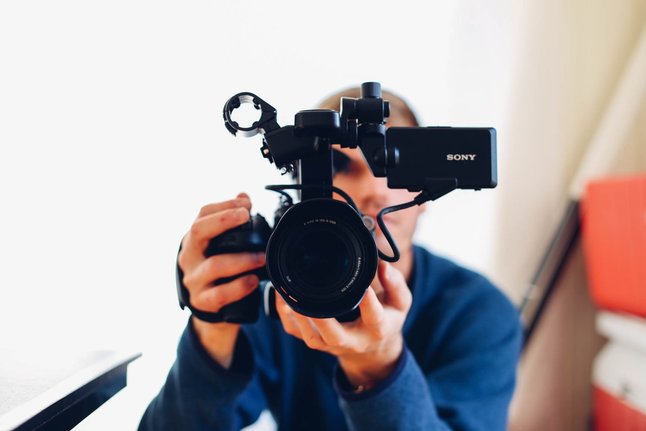 Snapchat vs. Instagram who’s winning the Stories 2.0
When Instagram released Stories in August 2016, many rolled their eyes at the blatant copying of Snapchat. Since that time, however, Instagram has made Stories its own.On my personal feeds alone, more and more friends and family are switching from Snapchat to Instagram - and while I am slowly transitioning apps myself, I see plenty of opportunities for brands to do the same. The image-based platform has seen a significant evolution in the past year, with the addition of Stories, live-streaming and a feed algorithm to uncover the most relevant content. Moreover, for businesses specifically, Instagram has also grown, adding business-specific profiles, improved adoptions and, coming soon, shopping tags, which could be huge. So how have users responded to all this change, which many thought could be moving too far from the platform’s more simplistic, visual-focused roots? The app has grown at its fastest ever rate, now with 600 million monthly active users, 400 million of them logging on every day. Moreover, this week, Instagram has revealed some new stats on their ad business, announcing that the platform now has 8 million active business profiles, and a million monthly active advertisers. Here are a few musings about the platforms. Insights Instagram allows you to know who your followers are. It is possible that your brand is producing great Snapchat content, but it does not matter if nobody sees it. The barrier of entry for users to follow a brand on Snapchat is much higher than it is on Instagram. Instagram Stories already has over 150 million users, and 70% of Instagrammers follow a business, underlining the potential in this regard. Also, 60% of Instagram users have indicated that they learn about products and services via the app. Features cool options. It is true that Instagram has mimicked many of Snapchat’s storytelling features, but it has also added its own spin, with additional capabilities (my favorite is Boomerang). In addition to the popular looping video generator, Instagram allows brands and users to tag other profiles in a Story. This is a great feature if your brand works with influencers. Instagram also allows you to swipe up from a Story to load a website of your choice. Utilize this feature if you want to showcase a product, encourage orders, and more. Money Who doesn't love to find savings! While posting an Instagram Story to your brand’s page is free, the platform is also rolling out in-story ad units. These ads are not yet available to all businesses, but we’re anxiously awaiting the release - you can see samples of the feed - we stumbled on a cool Airbnb ad recently, or SPG are already getting transactional clicks. Instagram Stories ads are full-screen, which will ensure they generate maximum impact. They're currently being tested with 30+ clients around the world, including Capital One, Buick, Maybelline New York, Nike, Yoox, Netflix, and Qantas. You also get more bang for your buck with Instagram Stories compared to Snapchat. Instagram utilizes the same targeting capabilities as Facebook, so your brand can take advantage of the custom audiences that are already set up. Furthermore, the reporting tools will be similar to what your brand is familiar with on Facebook and Instagram. According to TechCrunch, “Instagram will also provide business accounts with analytics on the reach, impressions, replies and exits of their Stories. They will be able to check analytics on their Stories through the Insights button on their profiles.” Bottom line, know who your consumer or audience is. Many times if brands forget whom they are targeting, if you demographic is an LOHAS consumer, they may not be on Snapchat. One thing is for sure, the content is endless, and the ability to engage in visual storytelling has become more accessible to more brands and the more organic, the better.
4 Comments
 So, you’ve hired a PR firm. Hopefully you will begin to foster benefits that come in the form of increased visibility, a boost in name recognition for you or your brand and improving your reputation. PR can do all those things by securing what is called earned media. A positive news story mentioning your company or receiving a great review of your product from a consumer group would fall into the “earned media” category. The benefit of earned media is that it tends to carry more weight with audiences because of the credibility of an independent source confirming your claims. As you probably know, your reputation is not who you are or who you say you are; it’s who others think you or the perception of via your consumers or your followers. This type of “earned media“ is defined as publicity generated by efforts outside of advertising, which is considered paid media, and it’s considered by most marketers to be more authentic. Not only does it convert at a higher rate than paid, or owned media, it also typically represents a higher lifetime value and has a lower cost per customer acquisition. Earned media PR is incredibly useful as long as the person speaking for the company is well-prepared and as communication + PR consultants we often find many of our clients are rookies when it comes to this type of media attention. Recently LOOK spoke with Shellie Bailey-Shah, former investigative reporter and current editor of KidTripster.com about how to best prepare for a media interview. Here are 4 tips to help you get comfortable for your close-up. 1. Gather the Facts and Do Your Research Preparing for a media interview can be similar to preparing for a new job opportunity - although, you’re already an expert. Reach out to the reporter or media outlet before the interview to clarify the topic of the story, and have a clear understanding of why you’re being interviewed. It’s essential to understand what the reporter is looking for and to anticipate possible questions you may be asked. "First, anticipate the questions that you will be asked, even the difficult and uncomfortable ones. Think through your response in advance and be ready with supporting evidence." Be sure that if you are representing your company that you research your own company! Review all recent press releases, events, and service announcements in order to be well-versed on the recent happenings in your industry as well. This allows you to be prepared to not only to comment on your own business, but on general trends in your industry. This brings value to the interviewer. Gather facts, statistics, and anecdotes which support the topic and make sure nothing is conflicting or unclear. We recommend that you have a print-out of key figures and/or statistics with cited sources that allow you to provide facts if needed. Be knowledgeable on the type of medium you’re providing an interview for:
Knowing a few key details can help you prepare properly for the interview. 2. Simplify Your Message for Clarity "Communicate your answers in terms that the average person can understand. Don't talk in circles, trying to mask your answer. You come off as being evasive and untrustworthy." We call that spinning! Spend time creating an outline of your key message, adding two or three supporting points you want to discuss. Keep the outline simple, and memorize highlights in order to remain on-topic and cover your entire intended message. When discussing important information, state the key message first and then provide background. Firmly establish your talking points, and don’t be afraid to repeat them in slightly varying ways. Use brief, clear sentences to express your point, learning to embrace the silence between questions. Reporters often use this awkward quiet to draw out unintended remarks from the person they are interviewing. Stay on track. Many individuals make the mistake of saying too much or going off on unrelated tangents which bury the more important information. Create powerful analogies, use precise statistics, and be prepared to provide the reporter with a strong, usable quote. Quotes provided by experts lend credibility to press stories, and you should assume that everything you say can be published or aired. Some interviewees get themselves into trouble by excessive joking, or off-colored comments prior to, or after the primary interview. (Remember that you could have a hot mic.) Nothing is “off-the-record” and you should only say as much as you’ve come prepared to discuss. 3. Practice and Review Practice makes perfect. Prepare for your interview by running through your talking points with a colleague. Hold a mock interview where you answer questions in rapid succession and consider recording it with a webcam. This will allow you to review the footage and examine your body language. You want to appear professional and friendly, make eye contact, and consider the inflection, articulation, and speed of your speech. "Be personable and relatable. I always tell interview subjects that we're simply having a conversation. That's how you should approach it. Unless you're on the hook for some misdeed, reporters aren't out to make you look made. Their objective is to communicate information as clearly as possible." 4. Never ever… "Finally, don't lie. Reporters interview people for a living; seasoned journalists can smell dishonesty from a mile away." Remember that the media is not an advertising agency where you control the story, and that their intention is usually to inform the public with a fair, balanced story. Be nice and thankful for being recognized enough by your industry to be interviewed. Successfully handling interview questions may mean a future invitation or follow-up interview. Thinking of a PR + Media review? Reach out, we at LOOK are here to support.[email protected] |
The Look Brain Trust
We at Look tend to post on our musing's and insights. If you have a blog or an article, we would love for you to share. Archives
April 2017
Categories
All
|
Photo from John Loo

 RSS Feed
RSS Feed